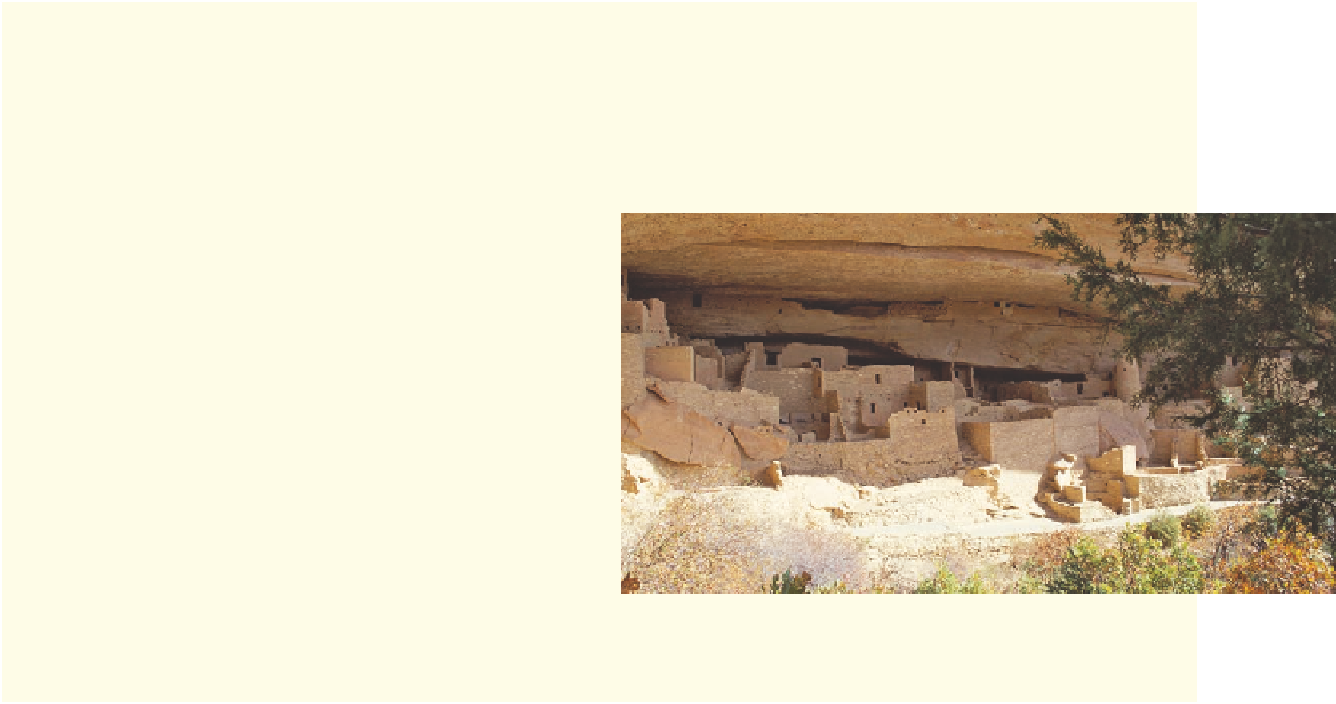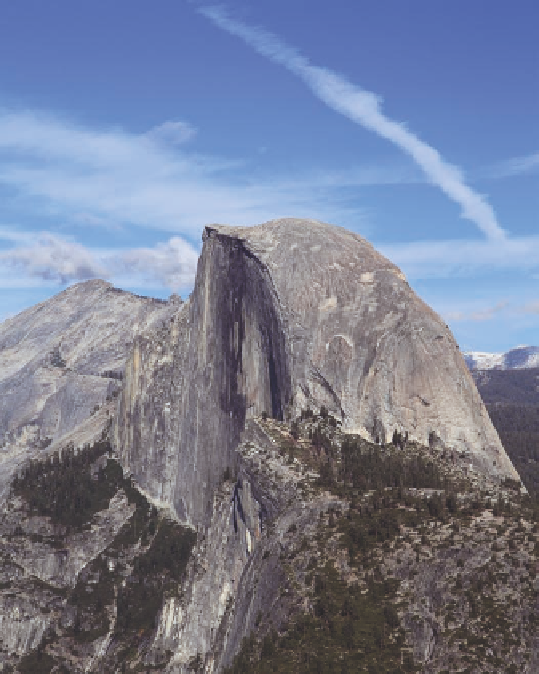Geoscience Reference
In-Depth Information
(a)
Figure 14.9 The impact of exfoliation.
Exfoliation occurs
when overlying rocks are removed through unloading and when
temperature changes cause expansion and contraction of surface
rocks. When these fluctuations occur, sheeting structure devel-
ops and rock flakes off the surface. (a) Exfoliation on Enchanted
Rock, an exposed batholith in central Texas. Note how flaky the
surface appears. (b) The peak of Half Dome Mountain in Yosemite
National Park is also composed of granite. Its unique shape gives
rise to its name. The peak shows the sheeting structure and
jointing associated with the process of exfoliation. These sheets
gradually flake off, revealing underlying rock that will then itself
expand.
(b)
D I S C O V E R . . .
PREHISTORIC CLIff dWELLINGS IN
THE SOuTHWESTERN uNITEd STATES
From an archaeological perspective, niches within cliffs of
the southwestern United States are interesting because
many contain the remains of ancient villages. These
settlements were constructed by Native Americans, the
ancestors of the modern-day Pueblo people who still inhabit
the region. Although the history of the Pueblo extends back
several thousand years, perhaps the most distinctive period
occurred between about
a
.
d
. 1100 and 1300 when they built
elaborate villages in canyon walls throughout much of the
region. The niches in which the dwellings were constructed
occur within the thick sandstones of the Mesa Verde Group,
which overlies the relatively impermeable Mancos Shale.
This rock sequence is very much like the one shown in
Figure 14.8 and is the perfect setup for salt-crystal growth
and niche formation.
(a)
Cliff dwellings such as these were occupied by the ancestral
Pueblo people about 700 to 800 years ago.






